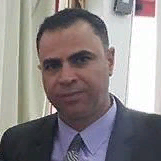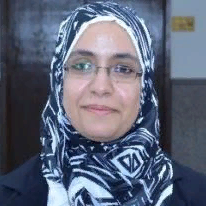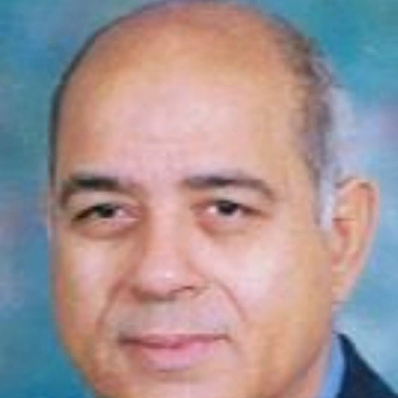International Journal of Engineering and Manufacturing (IJEM)
IJEM Vol. 9, No. 2, 8 Mar. 2019
Cover page and Table of Contents: PDF (size: 1507KB)
Load Test of Induction Motors Based on PWM Technique using Genetic Algorithm
Full Text (PDF, 1507KB), PP.1-15
Views: 0 Downloads: 0
Author(s)
Index Terms
Equivalent load, Induction motor, Genetic algorithms, Modulation techniques
Abstract
Genetic algorithms(GA) is optimization technique used in the equivalent load test of the induction motors to select the values of the factors(modulation indicators) that effect on the performance properties in terms of the values of the currents and the total loss within the machine. One way to choose these parameters is by trial and error while this paper based on GA method to improve the parameters selection. A model is designed to simulate the loading of the induction motor and obtain its own results by the MATLAB program 2017a. There are different methods used to achieve this task such as PWM inverter with different modulation techniques, Constant Voltage Variable Frequency (CVVF) method, Variable Voltage Constant Frequency (VVCF) method and Variable Voltage Variable Frequency (VVVF) method.
Cite This Paper
Basem E. Elnaghi, Reham H. Mohammed, Sobhy S. Dessouky, Mariam K. Shehata," Load Test of Induction Motors Based on PWM Technique using Genetic Algorithm", International Journal of Engineering and Manufacturing(IJEM), Vol.9, No.2, pp.1-15, 2019. DOI: 10.5815/ijem.2019.02.01
Reference
[1]Automation, Rockwell. "Application basics of operation of three-phase induction motors." Sprecher Schuh AG Rockwell Automation, Aarau 2011 (1996).
[2]Abdelkarim, E. A. H. (2011). Control and Measuring Method for Three Phase Induction Motor with Improved Efficiency (Doctoral dissertation, Technische Universität).
[3]Çolak, I., Bal, G., & Elmas, Ç. (1996). Review of the testing methods for full-load temperature rise testing of induction machines. epe Journal, 6(1), 37-43.
[4]Ho, S. L., & Fu, W. N. (2001). Analysis of indirect temperature-rise tests of induction machines using time stepping finite element method. IEEE transactions on energy conversion, 16(1), 55-60.
[5]Deaconu, S. I., Tutelea, L. N., Gabriel Nicolae, P. O. P. A., & Latinovic, T. (2010). Artificial loading for rotating electric machines. In International Symposium on Advanced Engineering & Applied Management-40th Anniversary in Higher Education (Vol. 11, pp. 213-218). Hunedora, Romania.
[6]Schwenk, H. R. (1977). Equivalent loading of induction machines for temperature tests. IEEE Transactions on Power Apparatus and Systems, 96(4), 1126-1131.
[7]Ytterberg, A. (1921). A new method for fully loading induction machines not having a driving motor or a load machine, the so-called Jolting test. Teknesk Tidsykvijt.
[8]Meyer, A., & Lorenzen, H. W. (1979). Two-frequency heat run-a method of examination for three-phase induction motors. IEEE Transactions on Power Apparatus and Systems, (6), 2338-2347.
[9]Boldea, I., Tutelea, L., & Klumpner, C. (2001, May). Artificial loading of induction machines: A review. In Workshop on Electrical Machines Parameters.
[10]Colak, I. (1994). Mixed-frequency testing of induction machines using inverters (Doctoral dissertation, Aston University).
[11]Colak, I., Garvey, S., & Wright, M. T. (1993, September). Mixed-frequency testing of induction machines using inverters. In Power Electronics and Applications, 1993., Fifth European Conference on (pp. 317-322). IET.
[12]Grantham, C., & Mckinnon, D. J. (2008, October). A rapid method for load testing and efficiency measurement of three-phase induction motors. In Electrical Machines and Systems, 2008. ICEMS 2008. International Conference on (pp. 160-165). IEEE.
[13]Mihalcea, A., Szabados, B., & Hoolboom, J. (2001). Determining total losses and temperature rise in induction motors using equivalent loading methods. IEEE transactions on Energy Conversion, 16(3), 214-219.
[14]Banan, K., Sharifian, M. B., & Mohammadi, J. (2004). Induction motor efficiency estimation using genetic algorithm.
[15]Huang, K. S., Kent, W., Wu, Q. H., & Turner, D. R. (1999). Parameter identification of an induction machine using genetic algorithms. In Computer Aided Control System Design, 1999. Proceedings of the 1999 IEEE International Symposium on (pp. 510-515). IEEE.?
[16]Maitre, J., Bouchard, B., Bouzouane, A., & Gaboury, S. (2015, November). 9 Parameters estimation of an extended induction machine model using genetic algorithms. In Electrical and Electronics Engineering (ELECO), 2015 9th International Conference on (pp. 608-612). IEEE.
[17]Bijan, M. G., Al-Badri, M., Pillay, P., & Angers, P. (2017). Induction machine parameter range constraints in genetic algorithm based efficiency estimation techniques. IEEE Transactions on Industry Applications.
[18]Bijan, M. G., Al-Badri, M., Pillay, P., & Angers, P. (2018). Induction machine parameter range constraints in genetic algorithm based efficiency estimation techniques. IEEE Transactions on Industry Applications.
[19]Abdel-Halim, H. A., Othman, E. A., Sakr, A. A., Zaki, A. A., & Abouelsoud, A. A. (2017). An Intelligent Control System Design for an Evaporator based on Particle Swarm Optimization. International Journal of Computer Applications, 166(9).
[20]Shanmugam, K. S. (1979). Digital and analog communication systems. NASA STI/Recon Technical Report A, 80.
[21]Ozimek, E., & S?k, A. (1987). Perception of amplitude and frequency modulated signals (mixed modulation). The Journal of the Acoustical Society of America, 82(5), 1598-1603.
[22]Kin, M. J., & Dobrucki, A. B. (2014). Perception of mixed modulation for single components in harmonic complex for high modulating frequencies. Archives of Acoustics, 23(3), 379-390.


